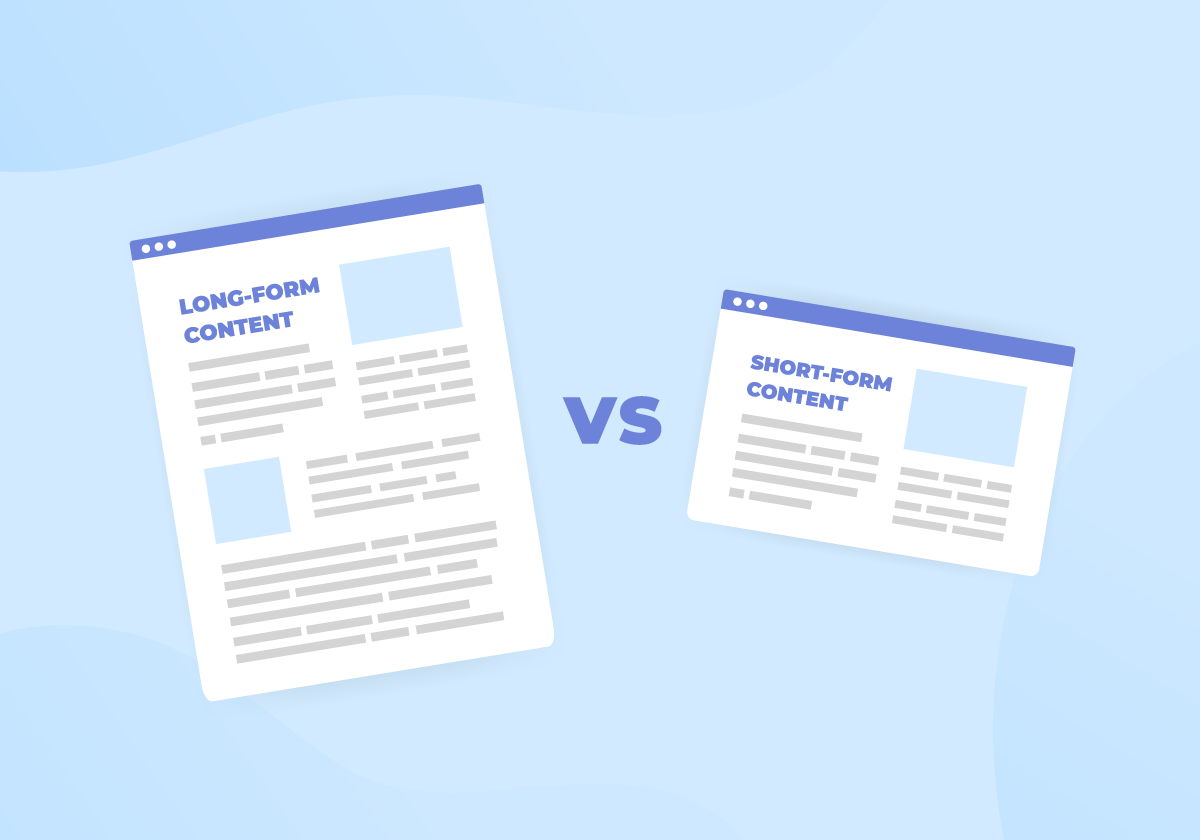
Introduction
In the realm of content creation (Content Creation Tips for Increasing Instagram Post Reach), there’s an ongoing debate about the ideal length for blog posts, articles, and other written materials. It’s a question of “short form vs. long form content.” Both have their merits, and the choice often depends on various factors, including your target audience, the topic, and your content marketing goals.
Content being a very important element of digital marketing is provided by many institutes in their PG in digital marketing.
In this blog, we’ll explore the definitions of short form and long form content, weigh their respective pros and cons, and help you find the right balance for your content strategy.
What is Short Form Content?
Short form content, as the name suggests, refers to concise pieces of written or visual content that get straight to the point. These typically range from a few sentences to around 700 words. Short form content is designed to provide quick and easily digestible information. It’s perfect for readers with limited time or those who prefer to consume content rapidly.
Examples of short form content include social media posts, brief blog posts, tweets, memes, and infographics. They aim to capture the essence of a topic or idea without delving into exhaustive detail.
What is Long Form Content?
Long form content, on the other hand, involves more extensive and in-depth exploration of a topic. It often exceeds 1,000 words and can go as far as 5,000 words or more. Long form content is characterized by comprehensive research, thorough analysis, and a focus on providing in-depth insights into a subject matter.
Long form content includes articles, whitepapers, eBooks, case studies, and detailed guides. It’s tailored for readers who are seeking a comprehensive understanding of a topic and are willing to invest more time in reading.
If you are interested in learning more about short form and long form content and if your reside in Delhi then you should search for digital marketing courses in Delhi .
Pros and Cons of Short and Long Form Content
Let’s now dissect the advantages and disadvantages of short and long form content to help you make an informed choice:
Short Form Content:
Pros:
1. Accessibility: Short form content is designed for quick consumption. It’s highly accessible and caters to readers with limited time. In a world where people are constantly on the move, short content gets straight to the point, making it easy to engage with.
2. Versatility: It’s incredibly versatile and suits various platforms. Short form content is ideal for social media, where brevity is a necessity. Whether it’s a quick post, tweet, or a meme, short form content works well for platforms with character or time restrictions.
3. Shareability: Short content tends to be more shareable. Its concise nature makes it suitable for creating viral content, quick tips, and sharing breaking news. Readers are more likely to share content that can be easily consumed and passed on.
Cons:
1. Limited Depth: The brevity of short form content can be a limitation when it comes to co vering complex or nuanced topics. It might not provide enough context or depth for readers seeking a comprehensive understanding.
2. Reduced SEO Opportunities: Search engines often favor longer content because it provides more information and context for their algorithms to analyze. Short form content may not rank as well in search results, which can limit your website’s visibility.
Long Form Content:
Pros:
1. In-depth Insights: Long form content allows for thorough exploration of topics. It’s the go-to choice for providing comprehensive information and insights. It caters to readers who are looking for a deep dive into a subject.
2. SEO Benefits: Search engines tend to favor long form content. With more content and keywords, it provides more context and opportunities for search algorithms to understand the topic, which can lead to improved search engine ranking.
3. Authority Building: Creating long form content positions you as an expert in your field. It demonstrates your knowledge and expertise, contributing to your credibility and authority in your industry or niche.
Cons:
1. Time-Consuming: One of the significant drawbacks of long form content is the time and effort it requires. Creating lengthy, well-researched articles demands more time for research, writing, editing, and fact-checking.
2. Potential Reader Overwhelm: Some readers may find longer articles intimidating and may not commit to reading them in their entirety. This can lead to a potential loss of engagement if your target audience prefers shorter content.
After reading the pros and cons you must be sure about the fact that mastering short and long form content is one of the most important digital marketing skills and must be pursued by every digital marketing aspirant.
Conclusion
In summary, short form content is quick and easily digestible, making it suitable for social media and time-pressed audiences. However, it may lack depth and SEO advantages.
Long form content offers in-depth insights and SEO benefits but demands more time and might overwhelm some readers.
The most effective content strategy often involves a mix of both, allowing you to engage various audiences and achieve your content marketing goals.
Tech World Times (TWT), a global collective focusing on the latest tech news and trends in blockchain, Fintech, Development & Testing, AI and Startups. If you are looking for the guest post then contact at techworldtimes@gmail.com

